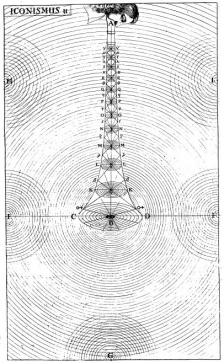This project addresses forms of communication related to espionage under Oliver Cromwell and Charles II. As part of the CRC subproject “Epistemic Dissonances,” my research shows how practices and technologies of acoustic secrecy prompted a recontextualization of theory formation in this period. The practices and technologies of espionage that developed at the time have special relevance for the subproject’s dual concern with acoustic phenomena as objects of knowledge and as epistemic tools.
In Foucault’s wake, historical research on surveillance has generally assumed the primacy of the visual, and neglected the auditory dimensions of espionage. To fill this gap, my project draws parallels between cryptographic communication and acoustic forms of secret communication. In the second half of the seventeenth century, theories and practices of cryptographic and acoustic secret communication were not entirely novel; they were situated within a much longer line of tradition. What was new, however, was the institutional framework provided by Cromwell’s Post Office as a centralized surveillance entity. Actors including the mathematicians and cryptologists Samuel Morland (1625–1695) and John Wallis (1616–1703) moved within this institution, retaining their positions even during the Restoration. My microhistorical study focuses on the relationship between Wallis’s quest for a new, mathematically grounded musical theory and his cryptoanalytical espionage activities. Also of interest are Morland’s espionage-related inventions: letter-copying machines, cryptographic methods and apparatuses (such as the “Machina cyclologica cryptographica,” 1666), and instruments for acoustic surveillance or communication (the “Otacousticon,” ca. 1671; the “Tuba stentoro-phonica,” 1671).

